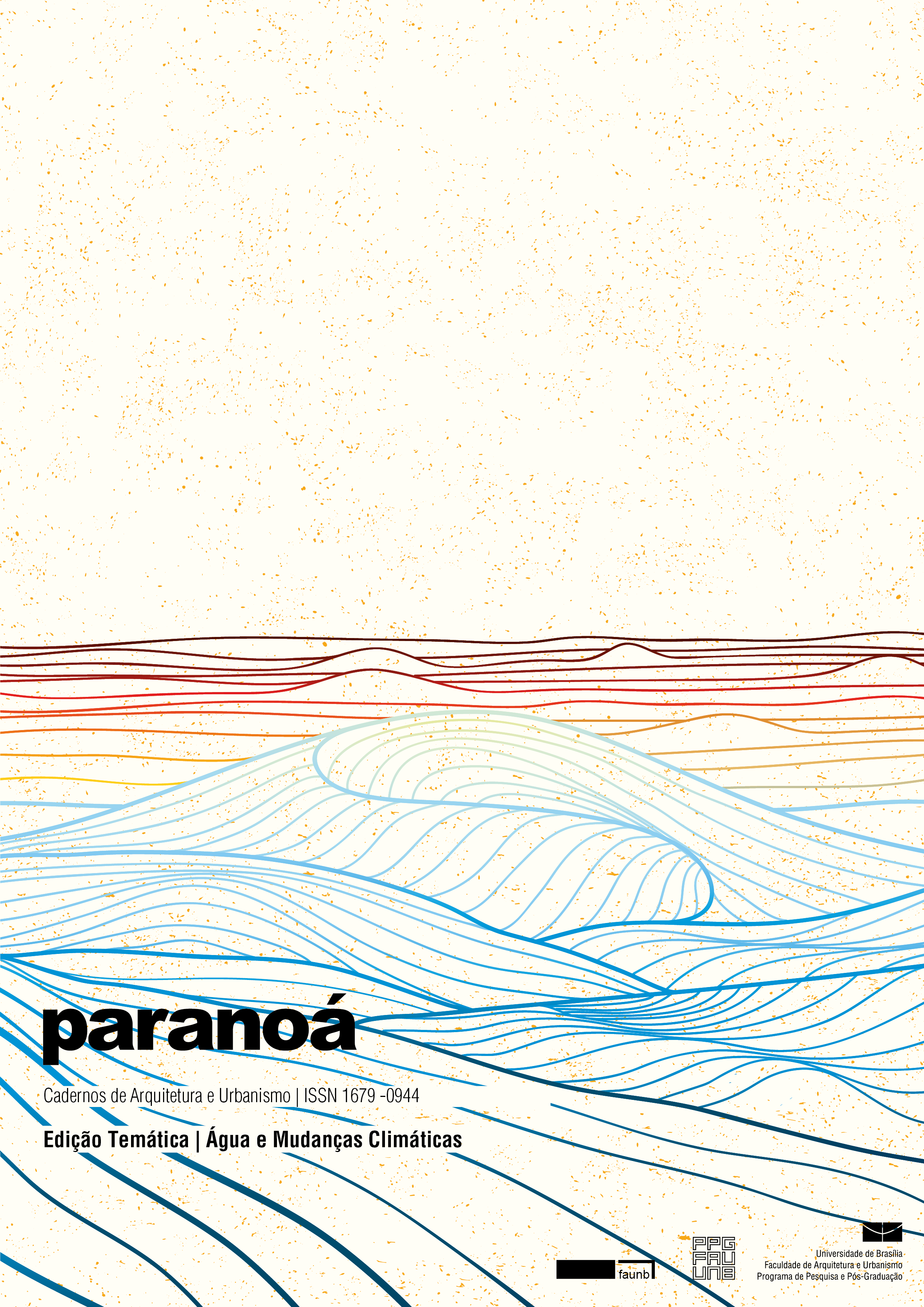Ernesto Walter’s Structural Inventiveness in the Praça dos Tribunais Superiores in Brasília: A Structural Art Analysis
DOI:
https://doi.org/10.18830/issn.1679-0944.n34.2023.06Keywords:
Cantilever Building; Structural Art; Ernesto Walter; Nauro Esteves; Praça dos Tribunais SuperioresAbstract
Structural inventiveness resides at the intersection of architecture, structure, and construction. It is important to recognize the symbolism expressed by structures and, above all, to understand the context in which engineers and architects conceptualize and design works that are identified as structural art. This paper examines the structural inventiveness of the Annex I building of the Regional Federal Court of the 1st Region [TRF; Tribunal Regional Federal da 1a Região], formerly the headquarters of Brazil’s Superior Electoral Court [TSE; Tribunal Superior Eleitoral], located in the Praça dos Tribunais Superiores in Brasília. Annex I was designed by architect Nauro Jorge Esteves and engineer Ernesto Guilherme Walter, both of whom worked with Oscar Niemeyer during Brasília’s construction. In particular, Ernesto Walter’s design process has not been sufficiently investigated, and this research highlights his structural inventiveness. Documentary research and computer modeling reveal the close relationship of the building’s structure with its plastic form, and how the designers’ joint architectural and structural decisions made possible its bold structural elements. Although it is not a listed heritage site, Annex I is a modernist building that merits preservation in light of its historical and cultural importance in Brasília. The preparation of a Conservation Plan should be based on the recognition of the building’s cultural significance.
Downloads
References
ADDIS. Bill. Edificação: 3000 Anos de Projeto, Engenharia e Construção. Tradução Alexandre Salvaterra. Porto Alegre: Bookman, 2009.
ALLAN, John. Points of Balance: Patterns of Practice in the Conservation of Modern Architecture. Journal of Architectural Conservation, 13:2, p.13-46, 2007. DOI: 10.1080/13556207.2007.10784994
BILLINGTON, David P. The Tower and the Bridge: The New Art of Structural Engineering. United States: Princeton University Press, 1983.
ESTEVES, Nauro Jorge. Depoimento – Programa de História Oral. Brasília, Arquivo Público do Distrito Federal, 1989. 40p.
FONSECA, Roger Pamponet da. Escriptório Technico Emílio H. Baumgart: Escola do Concreto Armado e a Escola Modernista Brasileira. Tese (Doutorado) Universidade de Brasília, 2016.
GARCIA, Cristiana Mendes. Construindo Brasília. A trajetória profissional de Nauro Esteves. Dissertação (Mestrado). Universidade de Brasília, 2004.
GARCIA, Cristiana Mendes. Construindo Brasília. Revista Senatus, Brasília, v.8, n.1, p.202-211, abr. 2010. Disponível em: https://www2.senado.leg.br/bdsf. Acesso em: 24 nov. 2020.
GOROVITZ, Matheus; WALTER, Ernesto Guilherme. Matheus Gorovitz e Ernesto Guilherme Walter: Auditório da UnB, DF - Formas arrojadas em estrutura estelar. Revista Projeto, Ed. 44, 1982. Disponível em: https://revistaprojeto.com.br/acervo/matheus-gorovitz-e-ernesto-guilherme-walter-auditorio-da-unb-df/. Acesso em: 23 jan. 2020
LIMA, Bruna B., ZANONI, Vanda A. G. Brazilian Palace of Congress: a Study of the Marble Cladding System State of Conservation. Journal of Building Pathology and Rehabilitation, 6:11, 2021. https://doi.org/10.1007/s41024-021-00105-6
MACDONALD, Susan. Concrete: Building Pathology. Oxford: Blackwell Science, 2003.
MARTHA, Luiz Fernando. FTOOL: Two Dimensional Frame Analysis Tool – Versão Educacional 2.12. Rio de Janeiro: Tecgraf/PUC/Rio, 2008.
NETO, Tiago F. C.; BRANDÃO, Jéssica F.B.; SÁNCHEZ, José M. M.; A Importância da Forma Estrutural: Obras de Maillart e Menn. REEC – Revista Eletrônica de Engenharia Civil v. 15, n. 1, p. 69-84, Goiânia, 2019.
PRUDON, Theodore. Preservation of modern architecture. Hoboken, NJ: Wiley, 2008.
SALVADORI, Mario. Por que os Edifícios ficam em pé. São Paulo, SP: WMF Martins Fontes, 2015.
SÁNCHEZ, José Manoel Morales; FONSECA, Roger Pamponet da; SILVA, Elcio Gomes da; AZAMBUJA, Eduardo Bicudo de Castro; ARAKAKI, Suyene Riether. Forma e função estrutural na arquitetura de Brasília - ponte, palácios, torre e Igrejinha. I Encontro Nacional de Pós-Graduação e Pesquisa em Arquitetura e Urbanismo. Anais... MACHADO, Denise P. et al. (org.). Rio de Janeiro: PROURB, 2010.
SIEGEL, Curt. Formas Estructurales en la Arquitectura Moderna. México: Editora Continental, 1966.
SILVA, Elcio G.; SANCHEZ, José M. M. Congresso Nacional: da documentação técnica à obra construída. Revista MDC, Disponível em: https://mdc.arq.br/2009/03/09/congresso-nacional-da-documentacao-tecnica-a-obra-construida/ Acesso em: 24 nov. 2020.
SILVA, Elcio G.; VASCONCELLOS, Juliano; SANCHEZ, José M. M. Instituto Central de Ciências: A complexidade da Síntese. 3º Congresso Internacional de História da Construção Luso-Brasileira BA, Salvador, 2019.
AUTORES. Título. In: I Congresso Internacional Gestão dos Patrimônios da Humanidade Urbanos - I Simpósio Internacional Patrimônios da Humanidade Mineiros no Contexto Internacional. MG, Juiz de Fora, 2019
WALTER, Ernesto Guilherme. Sobre o módulo de Young. Revista da SBHC USP, n. 6, p. 45-58, 1991. Disponível em: https://www.sbhc.org.br/revistahistoria/view?ID_REVISTA_HISTORIA=36. Acesso em: 26 jun. 2020.
WALTER, Ernesto Guilherme. Um diálogo Informal. Revista Humanidades, volume 8, nº 3, p. 288-301, Brasília, 1992.
WALTER, Maria Tereza Machado Teles et al. Biblioteconomia em Brasília: 60 anos de história. CRB-1, Brasília, 2020. p. 46-48. Disponível em: https://crb1.org.br/livro60anos/. Acesso em: 24 nov. 2020.
WEIDLE, Erico P. S.; KOHLSDORF, Gunter; GOROVITZ, Matheus. Considerações em torno da dimensão artística e cultural na obra de arquitetura. Revista Projeto, Ed. 18, 1980. Disponível em: https://revistaprojeto.com.br/acervo/consideracoes-em-torno-da-dimensao-artistica-e-cultural-na-obra-de-arquitetura/. Acesso em: 30 nov. 2020.
Downloads
Published
How to Cite
Issue
Section
License
Copyright (c) 2023 Paranoá

This work is licensed under a Creative Commons Attribution 4.0 International License.
Autores que publicam nesta revista concordam com os seguintes termos:
- Autores mantém os direitos autorais e concedem à revista o direito de primeira publicação, com o trabalho simultaneamente licenciado sob a Licença Creative Commons Attribution que permite o compartilhamento do trabalho com reconhecimento da autoria e publicação inicial nesta revista. http://creativecommons.org/licenses/by/4.0
- Autores têm autorização para assumir contratos adicionais separadamente, para distribuição não-exclusiva da versão do trabalho publicada nesta revista (ex.: publicar em repositório institucional ou como capítulo de livro), com reconhecimento de autoria e publicação inicial nesta revista.
- Autores têm permissão e são estimulados a publicar e distribuir seu trabalho online (ex.: em repositórios institucionais ou na sua página pessoal) a qualquer ponto antes ou durante o processo editorial, já que isso pode gerar alterações produtivas, bem como aumentar o impacto e a citação do trabalho publicado (Veja O Efeito do Acesso Livre).















